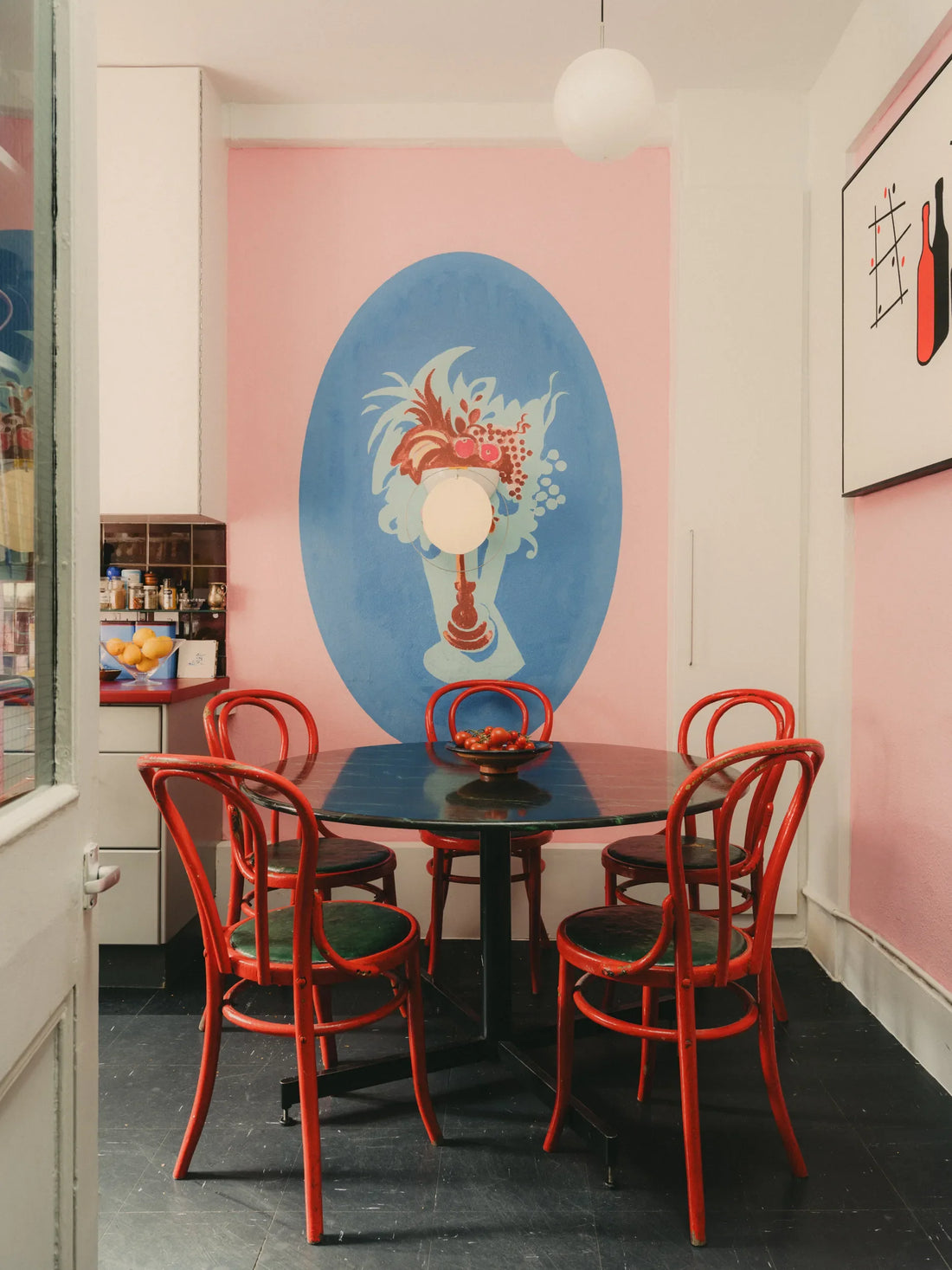
What Inspires the Wabi-Sabi Modern Vibe
“Wabi-Sabi” is a Japanese concept often described as finding beauty in imperfection, transience, and authenticity. When married with modern aesthetics — clean architecture, simple lines, design pieces — it yields something that feels: calm, grounded, unique.

This trend is increasingly appealing because:
Authenticity over perfection. People are tired of everything being “matchy-matchy” or sterile. The stories behind objects (where they came from, who made them, how they aged) matter.
Sustainability & reuse. Reupholstering old furniture, keeping inherited pieces, mixing old with new avoids waste, emphasizes durability.
Work-life blurring / creative living. More homes double as studios, display spaces, living rooms. That messy, personal overlap (craft supplies, art, tools) is no longer something to hide but something to embrace.
Emotional richness. A home that has memories in its furniture surfaces, that shows that people have lived in it — that feels warm.
How to Bring Wabi-Sabi Modern into Your Own Space
Taking cues from Pauline’s approach, here are actionable ideas:
Start with existing pieces. Before buying new furniture, look at what you already have: could it be reupholstered (in a boldly patterned or textured fabric)? Could you repaint or refresh it rather than discarding?
Let the maker’s hand show. Exposed craftsmanship — handmade joinery, visible stitching, brush strokes, marks of use — add character. If you do DIY, leave some traces rather than trying to make everything "perfect".
Mix eras & sources. Pair something mid-century with something contemporary; contrast factory-made with artisanal; include inherited, thrifted, or secondhand items.

Design for stories & display. Use shelving, pinboards, gallery walls not just for decoration but to tell stories — family art, work in progress, souvenirs, sketches.
Choose texture & material over matching sets. Linen, raw wood, felt, hand-woven textiles, imperfect glazing on pottery — these give depth and tactility.
Let colour be your accent, not your dominant. Use strong colours in small doses (a table top, a sofa, a mural) balanced by quiet backdrop colours (white walls, neutrals).
Evolve over time. Don’t feel pressured to do everything at once. Let the space change slowly as you gather pieces, revisit past works (like Pauline did with her degree show designs), and incorporate new life events (kids, grandchildren, art, craft).
Why Pauline Caulfield's Home Embodies this So Well
Without focusing so much on the specifics of her home, but more what she does:
She stays in the same rented space for decades, making it her own. The acts of repainting, reclaiming, decorating, layering show commitment.
She integrates art and work into everyday life: bedroom overlooks the printing table; family art and children’s contributions are not tucked away but on display. Creative life is woven in.
She keeps and revives older pieces rather than letting “newness” dominate: sofas from the 70s, works by friends, inherited furniture.

Why It Matters Now
Given the pressures many face — tightening budgets, environmental concerns, remote work, and a deeper craving for meaning — interiors that feel personal, imperfect, and full of life are resonating more. Wabi-Sabi Modern isn’t about settling for less — it’s about embracing what we have, making it better, and letting life’s footprint stay visible and beautiful.
-Juliette


